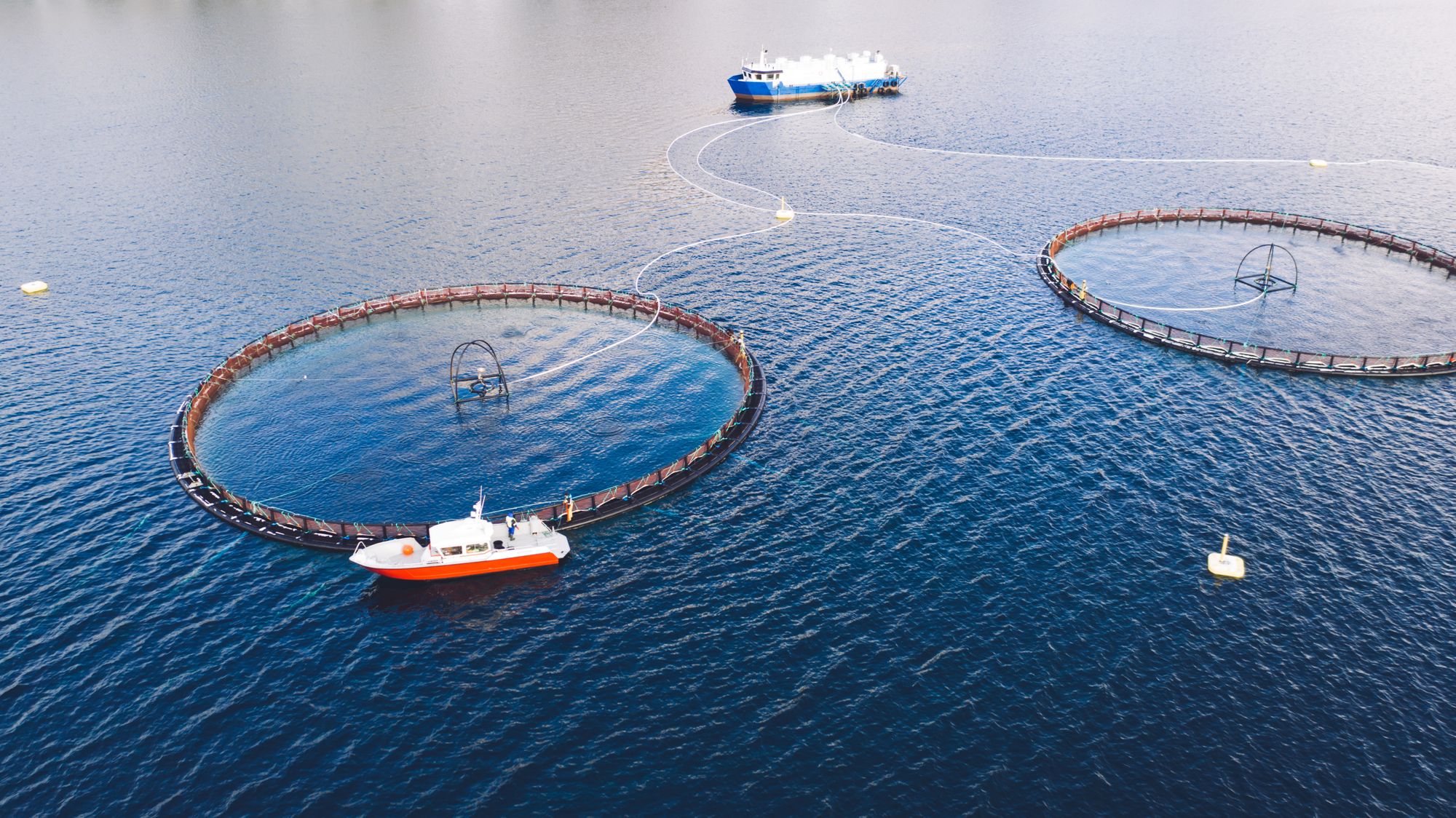Lessons from Pandemic Mitigation for Aquaculture Sustainability
Manolin's guest post for The Economist Group's World Ocean Initiative.

The U.N. Food and Agriculture Organization (FAO) reports that global fish consumption per head has doubled since the 1960s. Three billion people now depend on marine sustenance for their primary source of protein. Yet 90% of fish stocks are fully exploited, overexploited or depleted. Population and demand are continuing to grow, and aquaculture will play a crucial role in future global food security.
Aquaculture is already the fastest-growing food-production sector. The FAO predicts that it will produce about 59% of fish for human consumption by 2030. But as farm companies scale up to meet this need, fish health is increasingly suffering.

Spotlight on fish health
“Pathogens, parasites, and pests are a chronic risk for the aquaculture sector, and the intensification of production and increased trade and supply chain integration since 2000 have amplified these risks,” researchers write in a review published in Nature this year.
Between 2010 and 2016 Thailand’s shrimp industry suffered US$7.4bn in economic losses from just one emerging disease, with an additional US$4.2 billion in lost exports, researchers estimate. For a farmer in Norway, slaughtering 1m fish early due to disease can cost the business US$3.5m-5.3m, according to Nofima and Kontali.
An emergent aquaculture disease can wreak havoc on fish health for years before it is properly studied and managed. For example, pancreas disease (PD) was first found on salmon farms in 1976. The disease’s causative agent was isolated in 1995, and initial vaccines were licensed in 2005. Yet in 2020, nearly 45 years after the disease was identified, 21% of Norwegian salmon farms (184 of 869 total sites) still suffered PD outbreaks, according to Manolin's industry data.

Fish disease impacts coastal economies and has trickle-down effects across global supply chains. Aquaculture produces far more than fish for human consumption—including products used in food processing, feed, fuels, cosmetics, nutraceuticals and pharmaceuticals—and contributes a range of ecosystem services, according to Nature. Fish disease is the industry’s biggest challenge but also its biggest opportunity for positive impact.
The data opportunity
Much of the information needed to prevent disease is already available. Over the past few decades millions of satellites, floats and boat sensors have collected a massive amount of ocean and environmental data. Disease reports and the health status of Norway’s 400m active farmed salmon, for example, are publicly available in real time.
With these data, aquaculture can use technology to get ahead of disease outbreaks, much in the same way that epidemiologists are planning for the next pandemic.
Canadian software company BlueDot constantly tracks publicly available data to predict virus strains and risk of major outbreaks. In 2020 its artificial intelligence picked up on an unusual form of coronavirus spreading in Wuhan, China, nine days before the World Health Organisation reported it. Since then, forecasting tools have played a critical role in diagnosing, tracking and identifying the spread of the virus.
Aquaculture must similarly track and manage emerging disease before it threatens fish health. Manolin is already using industry data to predict early onset of farm disease with more than 93% accuracy, and new ocean-sensor technologies are boosting the quality and quantity of information collected across the globe. But this has only scratched the surface of data’s potential.
A multitude of factors in the water affect fish health. The more information these technologies have, the more accurate insights become. But right now a huge amount of information remains siloed between the farms and private companies collecting data, researchers finding trends and insights, and government leaders making policy decisions. Breaking down these barriers is a key step forward.
Preventing disease will reduce transmission to wild fish as well as the amount of chemicals entering the ocean. Beyond that, it will give the industry room to improve—with fewer resources devoted to disease management and more invested in sustainability initiatives.
As with any systems-level change, everyone can play a role in driving aquaculture sustainability. Ocean scientists, policymakers and private companies can share information, while consumers can demand more transparency from their food producers.
Global aquaculture will continue to grow. With the right tools this growth can benefit both human and ocean health.
This article originally published on The Economist Group's World Ocean Initiative. For more data, content, and insights, subscribe to Manolin’s newsletter.
Interested in working with us to help fuel aquaculture sustainability? Get in touch here.